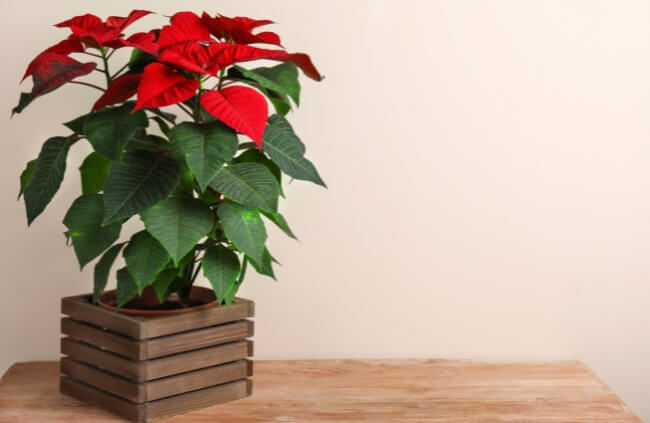While the poinsettia may be often mis-spelled (poinsetta, pointsettia and even poinsetia) it is not usually identified incorrectly. However, like the spelling mistakes one common error that people make when referring to poinsettias is classifying their bracts as flowers.
Those outstanding crimson leaves are bracts that protect their dainty inflorescences. Yet, while it may be hard figuring out the spelling and even the composition of this plant, they’re anything but hard to grow.
More...
What are Poinsettias?
Poinsettias are tropical plants, indigenous to Mexico, which means their main requirement is warmth. Growing these in areas that are susceptible to frosts, or even snow, dictates that they will need to be brought indoors or located in a greenhouse during winter.
Their new growth leaves, and bracts, are incredibly delicate and require a warm climate to prosper in. Most often, gardeners buy poinsettias as annuals in time for the Christmas season.
Once the festive season has passed they’re relegated to the compost heap or ignored until they finally die anyway. This doesn’t have to be the case and rejuvenating your poinsettia ready for the following year is quite simple.

How to Care for Poinsettia in Australia
The first tip to taking care of your poinsettia is to minimise the watering. Poinsettias only need a small amount of moisture and this should be limited to topping the plant up only when the soil becomes dry. When you water it, fill the pot until the soil becomes wet again and leave until this dissipates over the next few days.
Unless you live in the tropics don’t try and transplant your poinsettia in the soil – they won’t survive. Poinsettias in cold climates must be grown in containers and will most likely be relegated as indoor plants. If you’re lucky enough to own a greenhouse then they will grow remarkably well there.
In summer, taking your container outdoors and positioning in a part shaded location will be beneficial. However, if your nights fall below 10°C then you will need to bring them back indoors overnight.
Before summer starts, you can prune your poinsettia back to a few leaves, repotting it with new potting soil. It will pay to fertilise now as well and as the new leaves grow over the coming months, pinch out those that face into the plant to enable a better bushing poinsettia.
Published on June 7, 2023 by Nathan Schwartz
Last Updated on February 1, 2024




